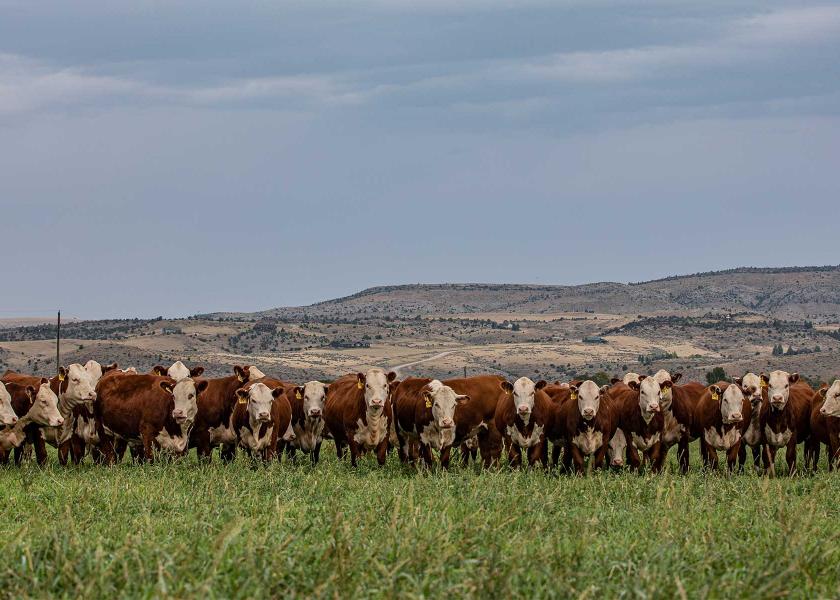Demand Increases as More Producers Come Home to Hereford

After a year filled with robust sales and growth in 2021, the American Hereford Association (AHA) predicts an even stronger year in 2022.
The American Hereford Association reports the average price of a live animal increased nationwide, and semen sales increased 9% domestically and internationally.
"The demand for Hereford cattle continues to grow, with strong sales across the country," says Jack Ward, AHA executive vice president. "It’s about coming home to Hereford because of the maternal heterosis, but equally as important, those steer offspring are well rewarded by the feeders and have an ultimate goal of a high-quality end product."
More commercial producers are finding Hereford genetics are raising their bottom line. Data from the U.S. Meat Animal Research Center found Herefords are more genetically different to any breed, and can capture more value from heterosis in a crossbreeding system.
Anton Hermes of Hermes Livestock in Washington County, Colorado, has seen the benefits of Hereford genetics in his commercial herd.
"When we set out to look for an outcross, I was looking for a breed that brought feeding capabilities and maternal characteristics to the table, and Hereford hit that on the head for us," Hermes says. "We found a more desirable feeding product in the steer calves, and we found a much more desirable replacement female in the F1-baldy cross out of the Hereford bulls."
Genetic trend lines also support Hereford’s flexibility to complement British- and Brahman-based cow herds. The AHA reports a 43% increase in the Baldy Maternal Index (BMI) and a 55% increase in the Brahman Influence Index (BII) over the past six years.
"The added heterosis that can be gained from using Hereford genetics is really highlighted, and there’s a lot of operations that can see advantages in not only weaning weight and carcass weight if they’re feeding their cattle out, but also on the maternal side," says Trey Befort, AHA director of commercial programs. "I think people are really starting to see that and taking advantage of that in their own operations."
Ward emphasizes Hereford’s growing influence in the nation’s commercial herd is a tribute to the membership’s commitment to making the breed better.
"Breeders have stayed committed to submitting DNA samples to help make cattle more predictable younger in life. So, as they’re working with their customers – commercial cattlemen – they’re producing an animal that’s based off of whole herd reporting. It’s based off of historical information through the pedigree. It’s based off of genomics, and then we add to it the information that we get from the young sire test herds that give an opportunity for our members to select genetics that work," he says.
"It’s a lot of things that have gone into that, but I think the industry has seen that our breed and our Association is committed to breed improvement," Ward notes. "And it’s taking hold."
Visit Hereford.org for more information about Hereford sales and genetic trends.







